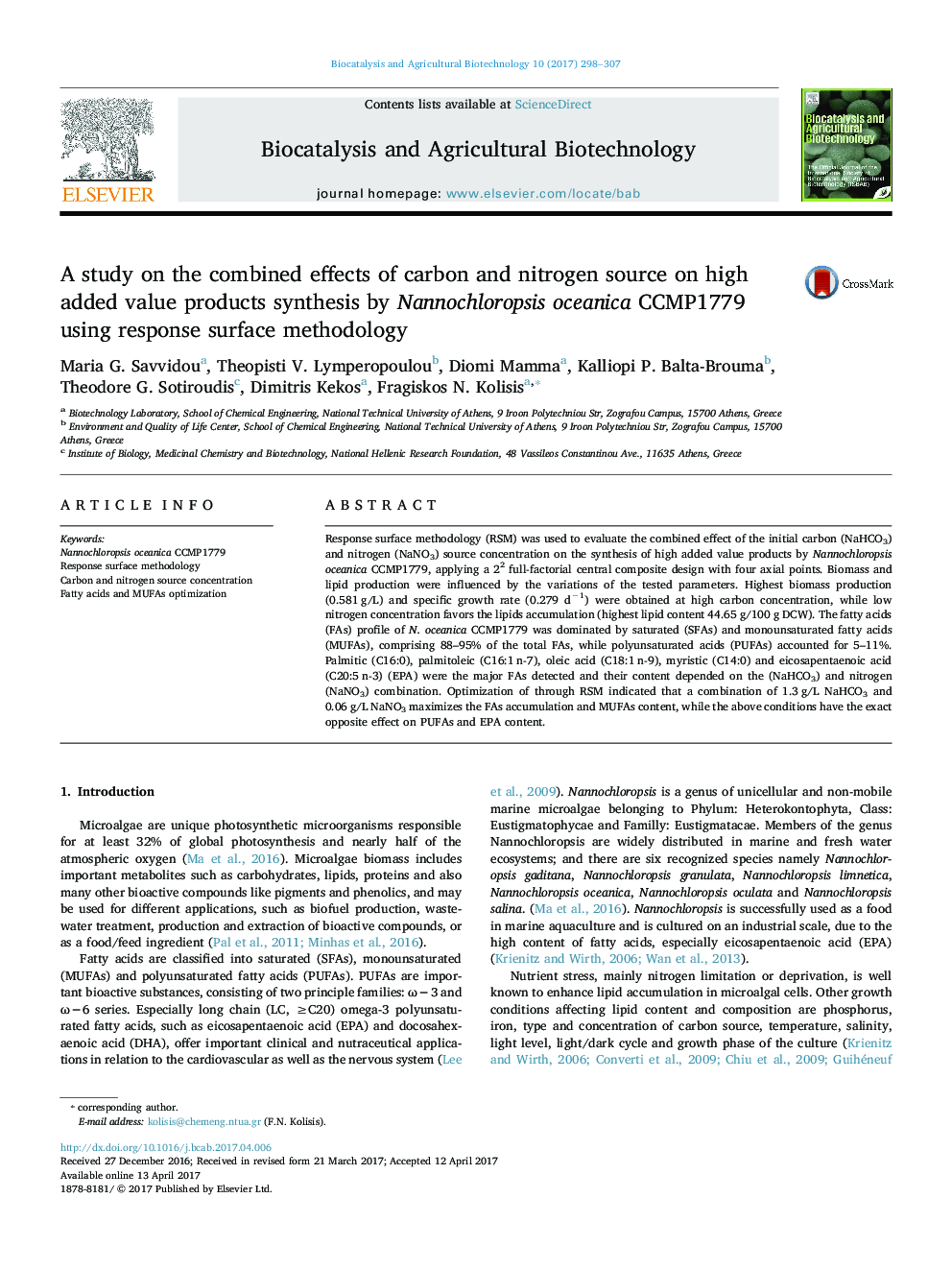| Article ID | Journal | Published Year | Pages | File Type |
|---|---|---|---|---|
| 5520471 | Biocatalysis and Agricultural Biotechnology | 2017 | 10 Pages |
â¢Synthesis of value added products by Nannochloropsis oceanica.â¢Study of the combined effect of initial carbon and nitrogen source concentration.â¢Carbon and nitrogen source concentration were optimized through RSM.â¢Low nitrogen and moderate carbon concentrations favors FAs and MUFAs accumulation.â¢The above conditions had the exact opposite effect on PUFAs and EPA content.
Response surface methodology (RSM) was used to evaluate the combined effect of the initial carbon (NaHCO3) and nitrogen (NaNO3) source concentration on the synthesis of high added value products by Nannochloropsis oceanica CCMP1779, applying a 22 full-factorial central composite design with four axial points. Biomass and lipid production were influenced by the variations of the tested parameters. Highest biomass production (0.581Â g/L) and specific growth rate (0.279 dâ1) were obtained at high carbon concentration, while low nitrogen concentration favors the lipids accumulation (highest lipid content 44.65Â g/100Â g DCW). The fatty acids (FAs) profile of N. oceanica CCMP1779 was dominated by saturated (SFAs) and monounsaturated fatty acids (MUFAs), comprising 88-95% of the total FAs, while polyunsaturated acids (PUFAs) accounted for 5-11%. Palmitic (C16:0), palmitoleic (C16:1Â n-7), oleic acid (C18:1Â n-9), myristic (C14:0) and eicosapentaenoic acid (C20:5Â n-3) (EPA) were the major FAs detected and their content depended on the (NaHCO3) and nitrogen (NaNO3) combination. Optimization of through RSM indicated that a combination of 1.3Â g/L NaHCO3 and 0.06Â g/L NaNO3 maximizes the FAs accumulation and MUFAs content, while the above conditions have the exact opposite effect on PUFAs and EPA content.
